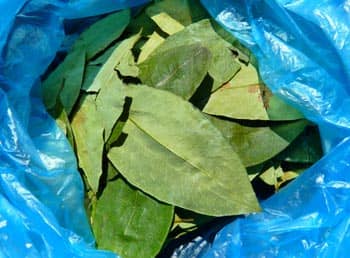Referral Service to
Private Treatment Centers in Canada
Cocaine comes from the extraction of coca leaves, a bush native to western South America. For many centuries local people would chew the leaves to suppress hunger, thirst, pain, and fatigue. In this form, it is a mild stimulant comparable to coffee. To put it in perspective, it takes 300 pounds of coca leaves to produce one pound of cocaine.
In the 19th century, researchers discovered that it numbs the tissues it touches. This discovery led to its use as a local anesthetic for different types of interventions. In the 20th century, it became a recreational drug in North America. It was attractive because it suppresses the appetite and increases stamina. It is a powerful nervous system stimulant. There are reasons why the drug can be highly addictive.
Get Immediate Help for Addiction
1 888-488-8434
Call our toll-free number

People can ingest cocaine in four main methods. You can take it orally by rubbing it on the gums, by snorting it (through the nostrils), by shooting it (mixed with water and injecting it in a vein), or you can smoke it.
There is no safe way to administer the drug. Absorption of toxic amounts of it can occur. Its toxicity can cause heart attacks, strokes, seizures and sudden death. Also, regular use can make you feel depressed and run down.
Cocaine in its purest form is a white, pearly product and has a sweet floral scent. But cutting agents and chemicals used in the extraction process alter its appearance. The version sold on the street can be white to off-white, a light pink or even beige. It can have a crystalline or powdery form; it smells like chemicals or metallic and taste bitter.
Dealers use cutting agents to stretch the supply to make it more profitable. Substances like talc, vitamins, detergent, and baking soda, to name a few, extend the drug. Some will add stimulants like fentanyl, amphetamines or caffeine to produce a similar high or numbing sensation.
Blow, Coca, Coke, Crack, Flake, Snow, and Soda Cot.
In small amounts, a person can feel euphoria, energetic, talkative and mentally alert. It can also decrease hunger and the need for sleep. In larger doses, it can intensify the high and bring some bizarre and erratic behaviour. Some users can feel restlessness, irritability, anxiety, panic, and paranoia. Other phenomena like tremors, vertigo, and muscle twitches were reported.
Medical complications can occur with cocaine use, some more severe than others. The most frequent are cardiac consequences, including disturbances in heart rhythm and heart attacks. Other complications are neurological effects that include headaches, seizures, strokes, and coma. Occurring also are gastrointestinal effects with abdominal pain and nausea.
Once the addict and family decide that help is needed, the first step is finding the right drug rehab center. One-on-one counselling and staff who understand the effects of the drug on a person’s life are important assets. Seeking help for cocaine addiction can be scary for the addicted person. A change in life and not knowing what to expect can deter anyone from making a move. We can help with the steps to take. Call or request a contact from us.
Source: wikipedia.org